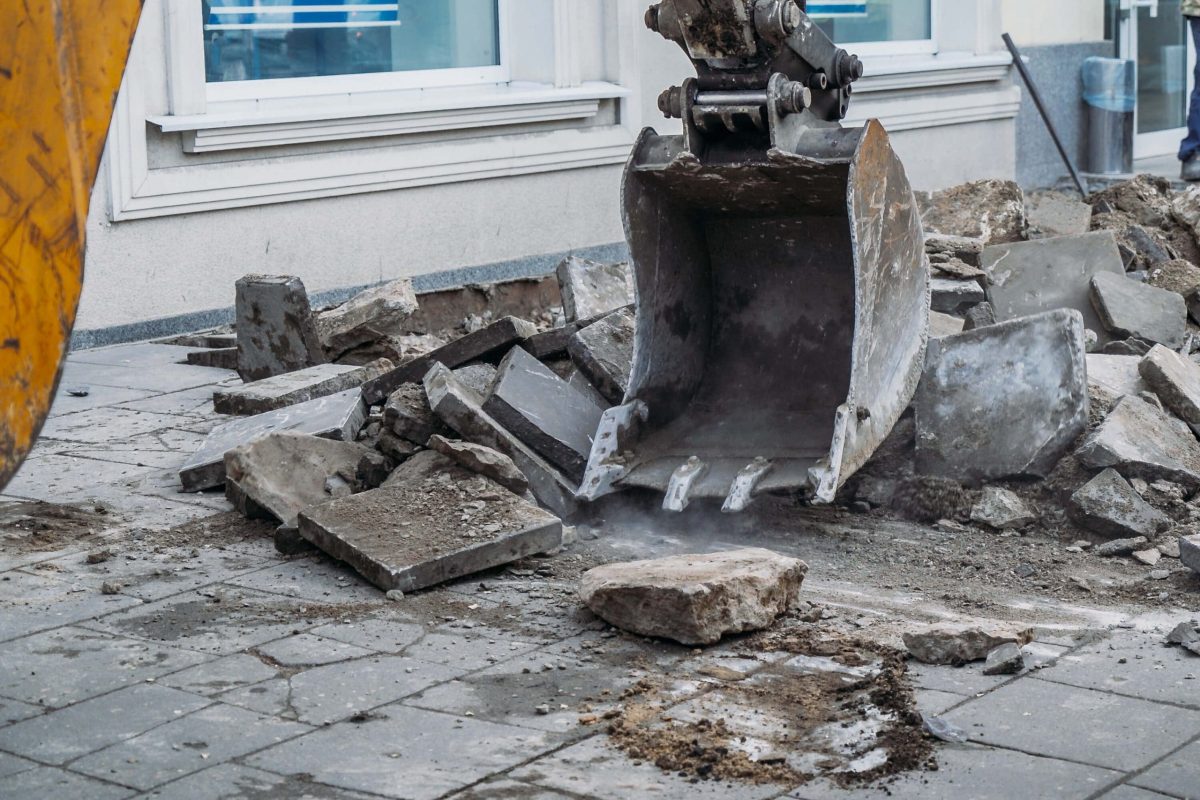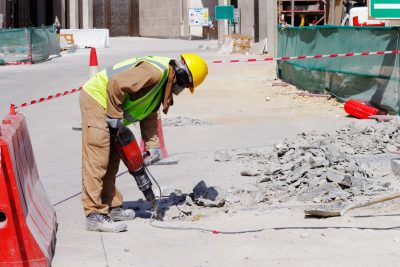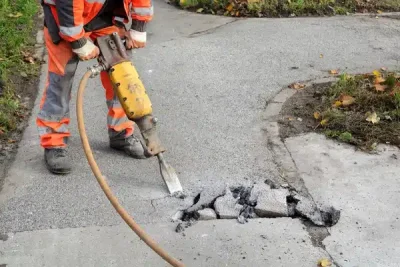How to Prepare Your Property for Concrete Removal Services
- Big Easy Concrete
- October 23, 2025
Table of Contents
1. Key Takeaways
2. Assess Your Concrete and Site
- Concrete Condition
- Site Surroundings
- Hidden Utilities
3. Your Concrete Removal Preparation Checklist
- a. Clear the Area
- b. Protect Property
- c. Mark Boundaries
- d. Plan Access
- e. Notify Neighbors
4. Safety and Legal Compliance
- Personal Protection
- Site Security
- Permit Checks
- Environmental Responsibility
5. Preparing Your Property: The Key to Smooth Concrete Removal
If you plan to have your concrete removed, start by clearing the area of furniture, vehicles, and vegetation to prevent delays or damage. Discuss underground utilities and drainage concerns with your contractor to keep the process safe and efficient. Big Easy Concrete can handle the removal for you.
When you’re ready to replace it with a new patio, walkway, or driveway, our team is here to help. Contact us today for a free estimate, and let’s make something beautiful together! Your ideal concrete solution is just a phone call away!
Key Takeaways
- Concrete and site conditions inspection – Understand what kind of removal you need. Take thickness, type, reinforcement, and access into consideration to plan accordingly.
- Make sure there are no hidden utilities prior to starting the job. Mark any underground lines and notify utility companies so you do not accidentally cause harm.
- Prepare your property for concrete removal services. Mark down and cover up safe zones for debris.
- Adhere to safety precautions and get permits. Provide workers with the right safety gear, cordon off the area, and adhere to local permitting laws.
Assess Your Concrete and Site
Good preparation for a concrete removal project that will yield quality results is a thorough examination of the concrete structures themselves and their environment. This critical step guarantees a safe, effective, and economic concrete removal process that is specially suited to your site’s conditions.
Concrete Condition
Understanding the state of your concrete is the secret to a successful removal project. Watch for wear such as crumbling edges or uneven surfaces, which may indicate hidden damage. If previous repairs or patches exist, they can also make removal more challenging.
Older concrete tends to be more brittle and may contain reinforcements like rebar or wire mesh, which can make the process harder and require extra care during removal.
Site Surroundings
Know your environment to control risk. Check how close the concrete is to walls, fences, or other nearby structures to prevent damage. Consider how removal might affect plants, landscaping, or soil stability. For concrete near driveways or walkways, plan to maintain safe and easy access during the process.
Hidden Utilities
Locating utilities is a mandatory safety step in any concrete removal project. All underground lines for gas, water, or electricity must be marked before the demolition begins. Review utility maps or check with local providers to verify their locations. Mark utility lines clearly and coordinate with providers before starting to avoid property damage.
Your Concrete Removal Preparation Checklist
Clear the area, protect property, and mark boundaries before concrete removal. Plan equipment access and staging zones. Let neighbors know about the schedule and potential disruptions.
1. Clear the Area
Begin by removing furniture, vehicles, and personal objects from the area to be cleared for concrete removal, which generates a considerable amount of debris and dust. Clear tripping hazards such as loose material and tools, and cut any overgrown vegetation or roots along the edges of the concrete. Lastly, choose a safe area where large pieces of concrete can be properly disposed of.
2. Protect Property
To demolish concrete safely, cover the adjacent buildings with drop cloths or barricades. Seal windows, doors, and sensitive surfaces with plastic sheeting or plywood to prevent damage from debris falling on them. Wrap landscaping elements such as flower beds and trees in tarps or burlap to minimize exposure to dust, and employ the proper techniques to hold back debris when dismantling.
3. Mark Boundaries
Use red chalk, stakes, or tape to designate the area of your concrete demolition project. Definitely define areas with underground utilities, for example, gas or water lines, to prevent destruction; call 811 or a comparable service for help. Also designate sensitive areas, such as nearby buildings or landscaping, to assist equipment operators in the demolition process.
4. Plan Access
For an effective project of concrete removal, designate access points for workers and equipment to ensure unhindered pathways for heavy machinery. Designate staging areas for equipment and for removing debris to ease the process of concrete removal and reduce on-site congestion.
5. Notify Neighbors
Inform neighbors of the project schedule for concrete removal and temporary noise or dust. Be an activist in your communication — bring forward concerns with solutions, like offering alternative parking to minimize the effects.
Safety and Legal Compliance
Concrete work involves safety equipment, safe zones, and proper permits. Wear protective equipment and limit access to avoid accidents. Obey local regulations and waste disposal laws to continue to be in line.
Personal Protection
Issuing employees proper protective gear is key to a successful concrete demolition project. Employees should wear helmets, gloves, and goggles to shield themselves from flying debris.
Respirators or dust masks are required to rule out hazardous concrete dust even in well-ventilated spaces. Steel-toe boots defend against falling debris and cutting tools. All protective gear must be standards-compliant in the industry to prevent accidents and liability claims.
Site Security
To protect the public during concrete demolition, access to the work area should be restricted. Fence or cordon off the site with clear warning signs about potential risks, such as falling debris and heavy machinery. Secure tools and restrict access to prevent accidents or theft.
Permit Checks
You will require permits for your concrete demolition project, which can depend on local building regulations. Review and obtain them in advance to prevent delays. Make sure all the permits are available on site, as inspectors could ask to review them. Additionally, ensure zoning and property restrictions to avoid fines or stops in the project.
Environmental Responsibility
Before a concrete demolition operation is initiated, utility lines should be turned off. Turn off utilities and follow approved disposal methods to prevent environmental harm. Proper disposal methods must comply with legislation and regulations to ensure effective concrete demolition.
Preparing Your Property: The Key to Smooth Concrete Removal
Planned removal of concrete prevents delays, expenses, and hazards. Accurate site preparation, evaluating the concrete, securing permits, and developing plans lead to a smoother operation. Proper selection of removal techniques and addressing potential hazards delivers better results.
Our experienced staff is ready to take on any size project. Big Easy Concrete can help with long-lasting driveways, high-end patios, and custom designs after your removal project. Call today for a free consultation to make your concrete vision a reality!











